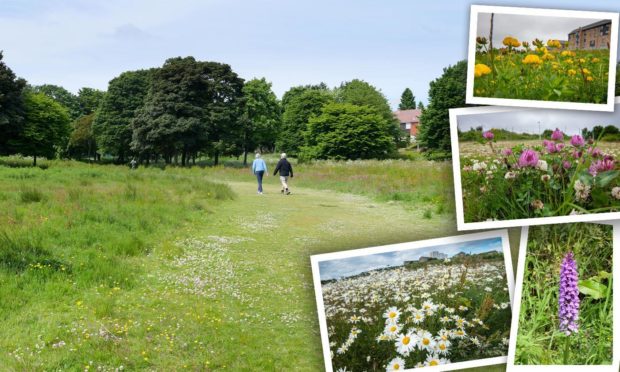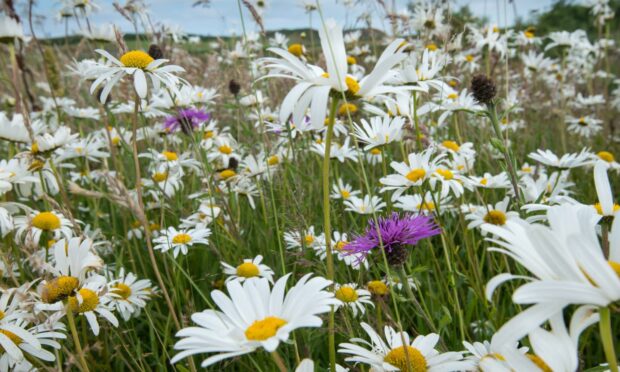Around 80 species of wildflowers and plants have been found in new natural areas around Aberdeen where grass has not been cut to encourage wildflowers, help bees, and provide habitats for wildlife.
The project adopts a more natural approach to managing greenspaces by letting plants and flowers grow over the summer months improving biodiversity. There are eight areas in and around Aberdeen that are part of the initiative including Eric Hendrie Park and Fernielea Park.
Some areas will not be cut until the end of the summer however other areas are maintained with more frequent cuts.
These are areas used for informal or formal recreation activities and, where the vegetation is allowed to grow longer, paths are mown through the areas to maintain public access.
‘There is a need to take action to manage greenspaces more sustainably’
Part of ACC’s Climate Change Plan, the project delivers a proactive response to reduce harmful emissions caused by council buildings, mobility, transport, and council operations. This will help in achieving net-zero targets by 2045 and also allows people to get closer to nature in their local area.
Philip Bell, Aberdeen City Council operational delivery committee convener, said: “Aberdeen has a long history of horticultural excellence dating back for more than 50 years resulting in many high-quality horticultural greenspaces – we have multi-award-winning parks and as recent as 2019 we were representing Scotland in the RHS Britain in Bloom UK finals, won a gold medal certificate, and also won the city category.
“With increasing awareness of climate change, there is a need to take action to manage greenspaces more sustainably to mitigate and reduce climate change and support biodiversity.
“It is good to see our efforts have supported about 80 species of wildflower and plants and the associated increase in insects and small mammals and we hope people enjoy these new areas and the benefits they bring.”

